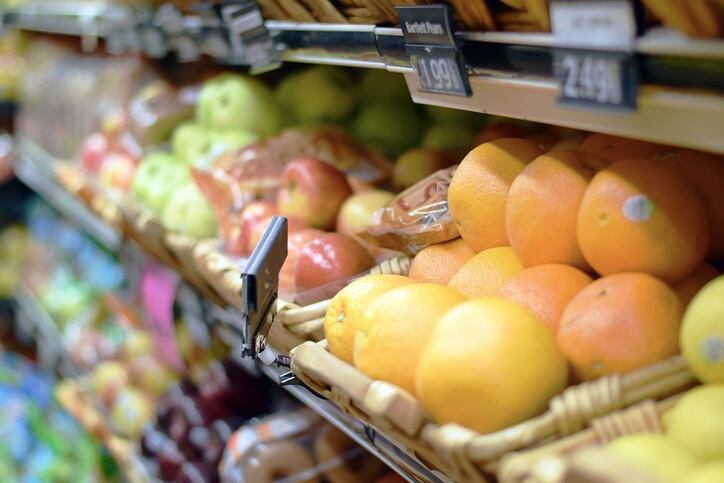In dunnbumby’s third annual Retailer Preference Index released today, several traditional regional grocers climbed the ranks of the top 60 largest retailers in the US based on a survey of 7,000 US households that evaluates grocers on price, quality, digital, operations, convenience, discounts & rewards and speed.
On average, traditional grocers moved up two spots compared to 2018, while non-traditional grocers fell three spots, according to the report. This shift helped propel a traditional regional grocer to the top spot of the index for the first time with H-E-B usurping Trader Joe’s, which held the #1 position for the last two years.
The traditional regional grocery chains Publix and ShopRite also moved up and, for the first time, moved into the top quartile of the survey results, according to dunnhumby.
Dunnhumby attributes H-E-B’s upset of Trader Joe’s and the rise of other traditional regional grocers in part to their “sustained focus and excellence on assortment relevance and private brand” – a strategy that is helping traditional retailers go “toe-to-toe with leading non-traditional retailers,” which have held consumers’ favor since the last recession.
As H-E-B’s move up indicates, traditional retailers have spent the last decade learning from their mistakes following the last recession, and as such “standout as being just as prepared for the next economic downturn as industry superstar Costco,” and other more recession-resistant chains, including Walmart, Aldi and Dollar General, according to dunnhumby.
Gaining a competitive edge
Based on consumer insights in the survey, dunnhumby found that information gleaned from strong rewards and loyalty programs helped traditional, regional grocers gain a competitive advantage in recent years by allowing them to offer consumers more of what they want versus what vendors think consumers want.
Dunnhumby hypothesizes that one reason product-mix resonates so highly with consumers is that it is easier to notice new and loved products on shelves than it is to notice other improvements, such as in operations, or a price decrease of a couple pennies across various categories.
More relevant product-mix also contributes to consumers’ perception of convenience – a powerful lever for traditional grocers given their size and scope, which allows many of them to offer one-stop shopping to consumers in a way that specialty and non-traditional stores cannot, dunnhumby adds.
“With today’s time starved consumer, convenience has increased in importance more than any other customer need. This is enabling traditional retailers with excellent assortment relevance (one element of convenience) to win,” the report explains. “Traditional retailers with many locations in a single geography (a key element in convenience) but have weak assortment relevance aren’t maximizing what can be a significant competitive advantage.”
Other factors in the winning formula for regional retailers in the top two quartiles of the survey results were highly relevant promotions and strong private brand, according to the survey results.
The report explains that these two represent stores’ “value core equation” of price plus quality, which retailers must balance correctly for their target consumer in order to move consumers’ preference needle.
In this value core equation, dunnhumby notes that price is the most important element for shoppers at almost all income levels – and also the place where traditional retailers are most vulnerable when compared to non-traditional discount chains.
“It isn’t until annual household incomes reach $200k that customers will generally favor quality in the value core,” dunnhumby said, noting that “price-first retailers have grown twice as fast as quality-first retailers over the past five years, with Aldi and the big dollar chains growing faster than almost any retailer measured.”
With that in mind, efforts to improve price perception will be rewarded over other values, such as advances in digital and ecommerce, the report found.
A looming recession?
Many of the lessons revealed by the report could help insulate traditional retailers against a potentially impending recession, which dunnhumby suggests could happen later this year or next.
“According to the National Association of Business Economists, the chances of a significant downturn by the middle of 2021 is around 70%, while others predict the chances to be closer to 50% by the end of 2020,” it notes, pointing to already ringing “classic recession alarm bells.”
These including weakening business investments, a contraction of the manufacturing sector, trade wars from tariffs that are estimated to cost the average US household $650, and a slowdown in US business confidence, dunnhumby explains.
If or when a recession strikes, one of the first changes that retailers will see are consumers spending less on food either by shopping on sale, seeking lower prices or simply buying fewer products, dunnhumby notes, explaining this is in part why it places such a heavy emphasis on price in its index.
Ultimately, based on the group’s 2019 index, grocers can best prepare for a recession by evaluating their price and quality and then emphasizing strong points of differentiation related to convenience, speed, operations and discounts, rewards, information and digital.

